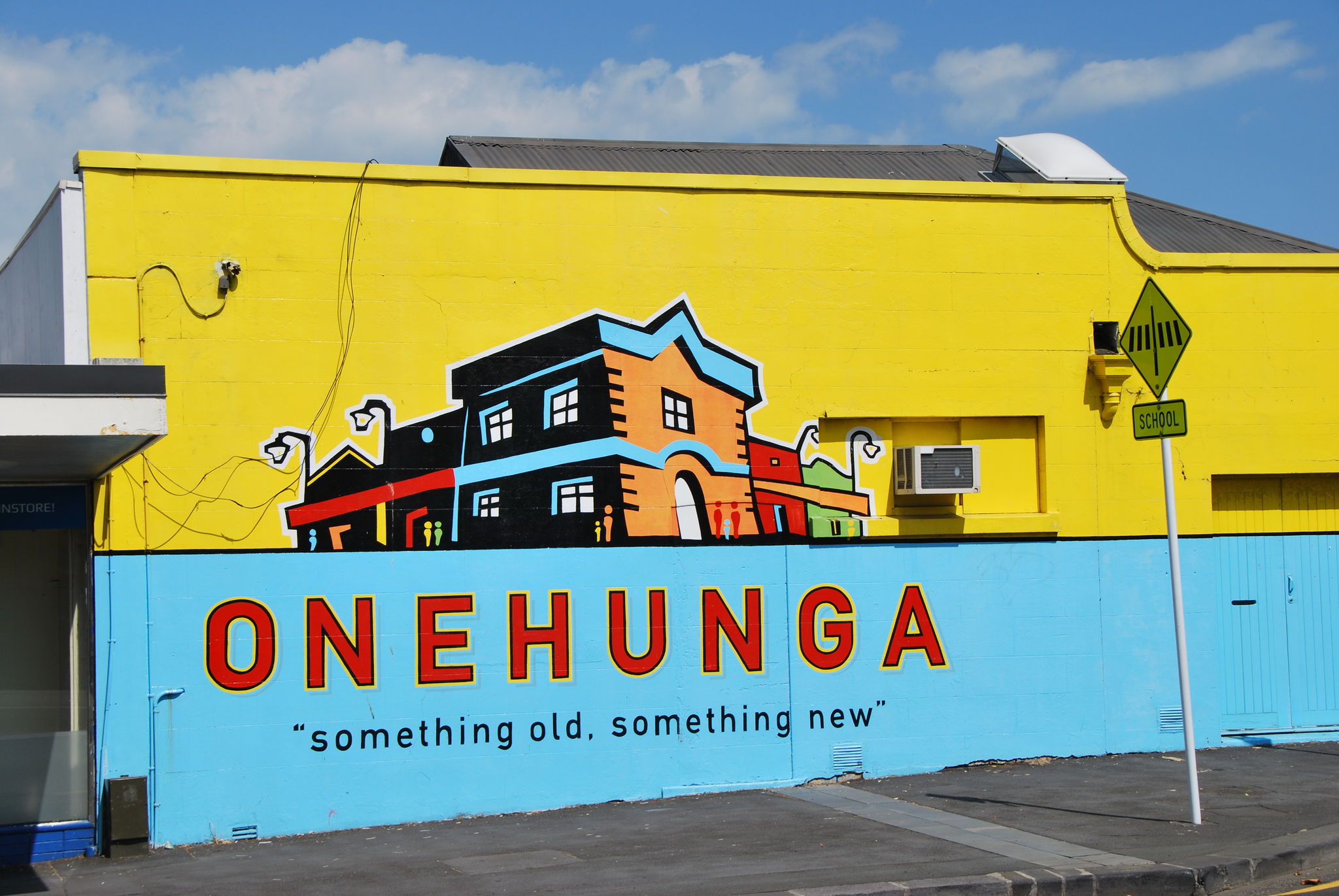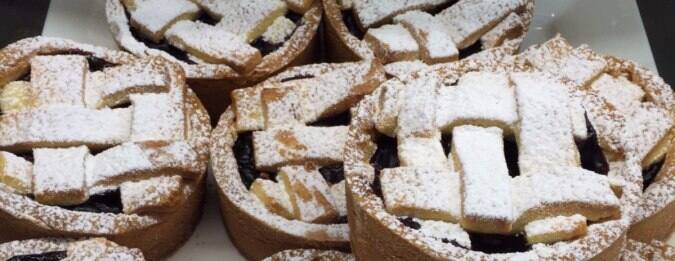Onehunga is
probably my favourite suburb of Auckland. Almost every weekend I jump in my old
Toyota and drive from Mount Albert, where I live, along the motorway to this
colourful old part of town. I don’t know why - maybe because it has a similar
vibe to the old working-class Ponsonby I grew up in.
The name
Onehunga is Māori and probably means "burial place", referring to the
Māori burial caves in the area. The place has always been in the centre of
things, going very far back because it is situated between two very important
mountain settlements and the Manukau Harbour.
In the Early
days of Auckland Onehunga was the south port town. You look across the Manukau
harbour to Mangere mountain.
When you
arrived in New Zeland at Mangere airport, you probably didn’t know the airport
is named after this volcano. Mangere means “lazy”, because the sea breeze that
comes off the Manukau Harbour made the ancient residents of the mountain
lethargic.
In this
archival picture you're looking south down the main street and Mangere is in
the distant background. The street still has something of this quietly
industrious vibe, and unlike many parts of Auckland, many of these buildings
are still there.
Like the
rest of Auckland, Onehunga is changing. There used to be a fantastic secondhand
bookshop there called the Hard To Find Bookshop where you could spend hours.
Inside it was a cave with dusty book-filled passageways and room after room
with flaking wallpaper. This creaking old shop was metaphor for the pleasure of
retreating into the world of books. I loved it best on a rainy Wednesday
afternoon. When it closed in Onehunga a few years ago, I was gutted. But it did
reopen in another part of the city.
Right next
door to where Hard To Find was, and part of the same creaking old set of
buildings that line the main street, is Luscious Cafe, where I always by an
Americano (black coffee) in a round turquoise cup and one of these cherry pies,
heated, with yogurt. I often meet my writer friend Richard there for a coffee
and crossword. We especially love the table on the pavement outside, where you
can soak up the atmosphere of the street, which is full of characters. Richard
loves feeding the sparrows with the crumbs of his cherry pie.
I should be
honest and show this less picturesque view. Like everywhere is Auckland, the
place is very mercantile and industrial. There are electricity pylons
everywhere, including in the harbour itself. The trucks make it a noisy, gritty
cacophony, unlike Auckland's other well-known port suburb, the slightly snooty
Devonport.
And then
there's Dress Smart, a huge mall for outlet stores. People flock here to buy
cheap jeans and sports shoes. I'm not a mall person, but this place has its
place. It's a fantastic place for people watching.
Looming
above Onehunga is Mangakiekie, or One Tree Hill, a vast parkland farm with huge
cultural and historical significance. Every part of the mountain has been
carved and adapted by human hands going back centuries. Many great Chiefs have
lived here. One of the names of this place is Ngā whakairo o Ti Tahi, which
means the great carving of Ti Tahi, and ancient chief who based the design of
the fortifications on own facial 'moko'.
Recently
there was a proposal to extend the motorway which already severs Onehunga from
its shore. It would have made an already inhospitable area even more so.
Luckily that's no longer happening and there are now plans to transform the old
port and develop a pedestrian waterfront park much like the Wynyard Quarter in
the central Auckland waterfront. Bring it on I say!
Word formation and prepositions
Onehunga is probably my favourite suburb ____ Auckland.
Almost every weekend I jump ___ my old Toyota and drive from Mount Albert,
where I live, along the motorway to this COLOUR
old part of town. I don’t know
why - maybe because it has a similar vibe ____ the old working-class Ponsonby I
grew up ____.
The name Onehunga is Māori and probably means "burial
place", REFER ____
the Māori burial caves ____ the area. The place has always been in the centre
of things, going very far back because it is situated _________ two very
important mountain SETTLE and
the Manukau Harbour.
…
In this ARCHIVE picture you're looking south down the main
street and Mangere is ___ the distant background. The street still has
something ____ this quietly INDUSTRY vibe, and unlike many parts of Auckland, many
of these buildings are still there.
Like the rest of Auckland, Onehunga is changing. There used
to be a fantastic secondhand bookshop there called the Hard To Find Bookshop
where you could spend hours. Inside it was a cave ____ dusty book-filled
passageways and room _____ room with flaking wallpaper. This creaking old shop
was metaphor ___ the pleasure of retreating _____ the world of books. I loved
it best ___ a RAIN Wednesday afternoon. When it closed in
Onehunga a few years ago, I was gutted. But it did OPEN in another part of the city.









No comments:
Post a Comment